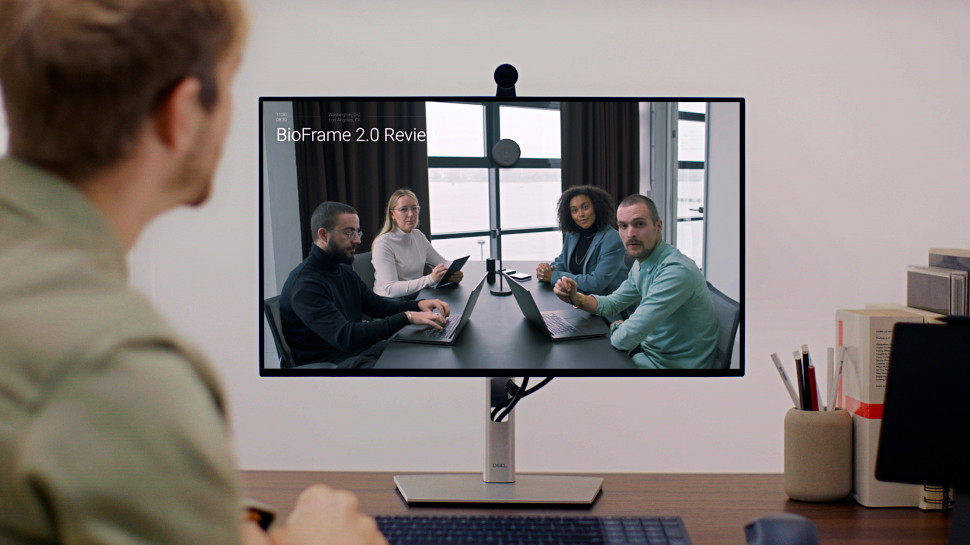The evolution of the webcam over the years
From humble VGA unit to 4K

With more workers trying out hybrid working patterns, our reliance upon webcams is at an all-time high. Whether you’re relying on a video connection to make important business calls or just want to connect with friends and family, the humble webcam is a very powerful tool.
There are plenty of things to consider when buying your next business webcam - there are even video bars to consider. This article explores the evolution of the webcam over its short three-decade lifespan.
Early history
Video transmissions and broadcasting was nothing new, but in 1991 curious workers at Cambridge University in England wanted to experiment with bringing a live feed directly to their computers.
The mission was to remotely monitor a coffee pot in the Trojan Room Computer Laboratory - a different room to where the staff would work. Rather than connecting with people (as is the case today), this group of employees wanted to monitor whether the coffee was ready to be consumed without wasting time and disturbing their productivity.
In its first iteration, this early webcam was connected by a wire under the office’s flooring to provide a live video feed capturing three frames per minute using code built in-house.
The team continued to develop and work on the product. One year later, it was connected to the Internet with its frame rate increased to 1fps.
The camera was switched off forever in 2001 after an entire decade of coffee pot monitoring.
Are you a pro? Subscribe to our newsletter
Sign up to the TechRadar Pro newsletter to get all the top news, opinion, features and guidance your business needs to succeed!
Commercialization
Beyond internal experiments, Connectix Corporation is credited with producing the first commercially available webcam which launched in August 1994. It costed $99 (adjusted to today’s standards, that equates to around $188).
Originally compatible with the Apple Macintosh, the company’s QuickCam webcam connected via a VGA port. Support for Microsoft computers was released one year later in October 1995.
The QuickCam filmed at an incredible 60fps, though images were only captured in 16 shades of grey. Later support was added for 256 shades of grey, however frame rate for this was reduced to a still acceptable 15fps.
The resolution was less than impressive by today’s standards, measuring 320x240 pixels in a 4:3 aspect ratio.
The year 1996 saw the introduction of the first laptop with a built-in webcam, though this IBM machine was especially expensive at $12,000 (the equivalent of $21,503 today).
One of the earliest reported uses of a webcam is the 1996 JenniCam. The then 19-year-old Jennifer Ringley set up a webcam in her university bedroom in Pennsylvania and began a new phenomenon that would be known as lifecasting. The camera, broadcasting to her own website, remained active until 2003.
The first video conferencing suite, Microsoft NetMeeting, became available in 1996. It supported video at up to 30fps though broadband connections weren’t widely adopted at that stage so it was primarily used by corporate clients.
Widespread adoption
The turn of the century saw huge technological advancements across the board, felt particularly by household consumers.
By the early 2000s, Apple, Microsoft and Logitech were all designing their own webcams in order to get a slice of the market.
Instant messaging platforms were beginning to add support for video calls, with the likes of Yahoo Messenger opening its doors to the new technology in 2002 and MSN Messenger following a year later in 2003. The year 2003 also saw Skype add what it called ‘peer-to-peer communication’ to its platform. Although it was end-to-end encrypted, there were questions raised about its security with multiple cases of people gaining unauthorized access to private conversations.
Boosted resolution: 4K
After 15 years of widespread webcam use, the world was beginning to rely on webcams to make video calls. Consumers began demanding a better experience, wanting to see their friends’, family’s and colleagues’ faces more clearly.
An early player in the game, Logitech was the first company to release a commercially available 4K webcam several years after its first webcam in 2017. Its Brio webcam cost around $200 demonstrating exactly how cheaply webcams could be made compared with the earliest designs.
The 4K webcam filmed at 30fps, with support for 1080p ‘Full HD’ at 30fps or 60fps, and 720p ‘HD Ready’ at 30fps, 60fps or 90fps. A 5x digital zoom and support for HDR added to the webcam’s extensive list of features, while users could choose between 65-, 78- and 90-degree fields of video in order to tailor their experience to their unique setting.
What the future holds is yet unknown, however a number of external cameras that support as much as 8K resolution can be connected to certain computers, alluding to the possibility of mainstream webcams pushing the boundaries of 4K.
From VGA to USB-C
Early webcams connected using a VGA port, which offered the stable transmission of video from an external device to the customer’s computer. In order to add support for audio, manufacturers had to change the connector they used. The most widely adopted of these being the USB-A, which is still very much in use today.
With the emergence of 4K webcams, USB-A proved incapable of handling such large files. Professional webcams such as these instead use the much faster USB-C. Computers without USB-C ports can connect to the latest webcams with an adapter, though bear in mind that this limits the speeds, thus renderring the 4K capabilities unusable.
A focus on privacy
While constant improvements have been made to the hardware, consumers have taken an increasingly cautious approach in terms of their privacy. Manufacturers acted early, with many companies adding a physical barrier to their webcams. This shutter-like cover guaranteed that no unwanted access would be obtained without the need to physically disconnect the external webcam.
A more streamlined approach to this is found in the latest webcams, both integrated and external. A simple LED indicator lets the computer’s user know when the camera is in use, though some users don’t get as much peace of mind from this as a physical shutter.
We feature the best webinar software.
With several years’ experience freelancing in tech and automotive circles, Craig’s specific interests lie in technology that is designed to better our lives, including AI and ML, productivity aids, and smart fitness. He is also passionate about cars and the decarbonisation of personal transportation. As an avid bargain-hunter, you can be sure that any deal Craig finds is top value!
